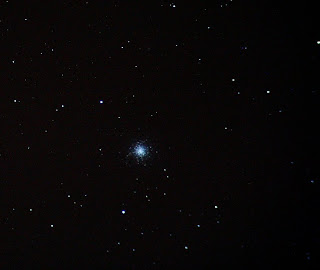 Twas the night before Christmas, when all through the house Not a creature was stirring, not even a mouse;
Twas the night before Christmas, when all through the house Not a creature was stirring, not even a mouse;Christmas Eve, and you're snuggled cozily in your den. A glowing fire gently crackles and pops in the fireplace, and your head starts to droop as you nod off. Just then, something cold and wet nudges your cheek. You open your eyes to stare directly into a large black nose. It's time to take the dog for his walk.
Grumbling in vain, you put on your coat, snap the leash onto the wiggling dog's collar, open the door to a rush of cold air. You step outside and enter a magical landscape.
The night isn't dark, it's glowing with a silvery-white light. Up above, the 98% full moon looks huge and clear in the azure sky. It just might be the brightest moon you've ever seen. That's because it's the highest-riding full moon until the year 2023.
Grumbling in vain, you put on your coat, snap the leash onto the wiggling dog's collar, open the door to a rush of cold air. You step outside and enter a magical landscape.
The night isn't dark, it's glowing with a silvery-white light. Up above, the 98% full moon looks huge and clear in the azure sky. It just might be the brightest moon you've ever seen. That's because it's the highest-riding full moon until the year 2023.
And not far from the beautiful moon glows fireplace-red Mars. This Christmas Eve, Mars is at its closest to Earth for the next nine years. Mars is also "at opposition." That's astronomy-lingo for "directly opposite the sun." It means Mars is up whenever the sun is down: on Christmas Eve, the Red Planet will be visible all night long.
As Christmas scenes go, it doesn't get much better. Gliding in formation across the sky, the moon and Mars seem so close you could almost reach up, grab the pair and bounce them down the street for Fido to retrieve.
Or maybe you could lasso them, as George says in the movie It's a Wonderful Life. "Just say the word and I'll throw a lasso around it and pull it down. Hey! That's a pretty good idea! I'll give you the moon, Mary...."
In the years ahead, NASA is going to lasso the moon. NASA's giant Ares rocket, still on the drawing board, will take form and then take mankind back to that brilliant silver orb where scientists will learn how to harness the moon's powers.
Plans are to establish a lunar base for exploration and use the moon's surface as a springboard to even further destinations. At the moon's poles there is evidence of hydrogen and perhaps actual water frozen in the soil. Furthermore, ordinary moonrocks are made of minerals that contain more than 40% oxygen. These are resources that can be used to produce rocket fuel, breathable air and a welcome drink on a dry, dusty world.
Or maybe you could lasso them, as George says in the movie It's a Wonderful Life. "Just say the word and I'll throw a lasso around it and pull it down. Hey! That's a pretty good idea! I'll give you the moon, Mary...."
In the years ahead, NASA is going to lasso the moon. NASA's giant Ares rocket, still on the drawing board, will take form and then take mankind back to that brilliant silver orb where scientists will learn how to harness the moon's powers.
Plans are to establish a lunar base for exploration and use the moon's surface as a springboard to even further destinations. At the moon's poles there is evidence of hydrogen and perhaps actual water frozen in the soil. Furthermore, ordinary moonrocks are made of minerals that contain more than 40% oxygen. These are resources that can be used to produce rocket fuel, breathable air and a welcome drink on a dry, dusty world.
Maybe on some future Christmas Eve, one of us will step outside of our cozy lunar cabin and walk our space-suited dog with long, floating steps down some dusty lunar road. We'll look up and say, "There's a pretty full Earth tonight!"
But on this frosty Christmas Eve, your feet crunch Earth's cold ground with a crisp clear sound as you walk back toward the house looking up through the silvery stillness at the lovely moon and its bright partner, Mars. The only other sounds you hear are dog tags jingling like sleigh bells. Suddenly a shadow flits across the moon. A cloud? A plane? A sleigh! Maybe those were sleigh bells you heard!
Smiling to yourself, you open the door to go back inside, taking one last glance at the night sky and one of the loveliest heavenly sights you’ll see for years.
But on this frosty Christmas Eve, your feet crunch Earth's cold ground with a crisp clear sound as you walk back toward the house looking up through the silvery stillness at the lovely moon and its bright partner, Mars. The only other sounds you hear are dog tags jingling like sleigh bells. Suddenly a shadow flits across the moon. A cloud? A plane? A sleigh! Maybe those were sleigh bells you heard!
Smiling to yourself, you open the door to go back inside, taking one last glance at the night sky and one of the loveliest heavenly sights you’ll see for years.
















































